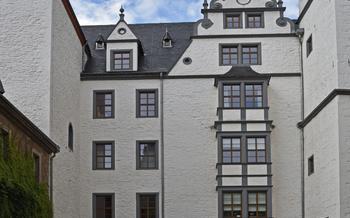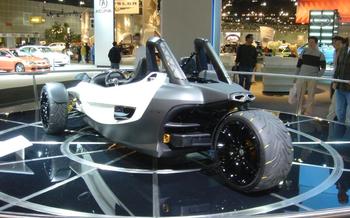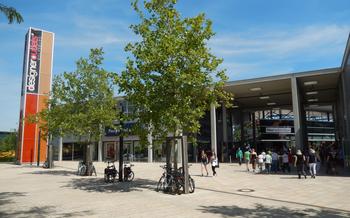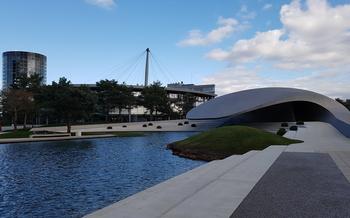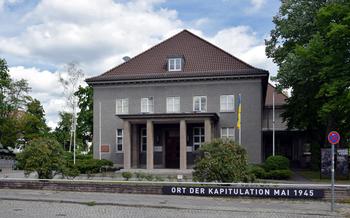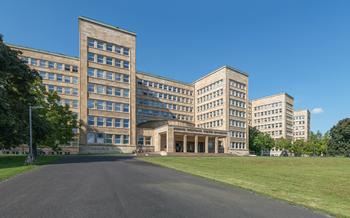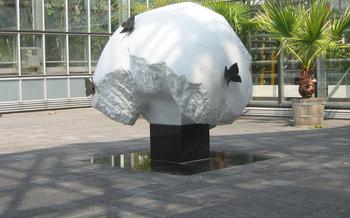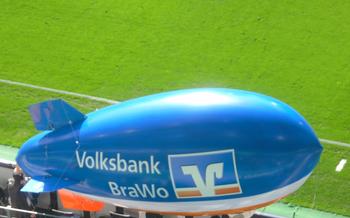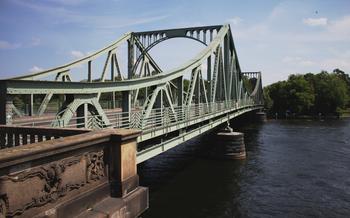
Volkswagen Auto Museum
- Volkswagen Auto Museum: A Showcase of Automotive History
- Tracing Volkswagen's Roots: The Early Years
- The Rise of the People's Car: Mass Production and Innovation
- Post-War Recovery and Expansion: Rebuilding the Brand
- Engineering Excellence: A Legacy of Innovation
- Global Expansion and Brand Recognition: A Worldwide Presence
- The Volkswagen Auto Museum Experience: Interactive Exhibits and Displays
- Volkswagen Heritage and Cultural Significance: Beyond Cars
- The Environmental Turn: Sustainability and Electric Mobility
- Museum Highlights: Must-See Exhibits and Vehicles
- Educational Programs and Workshops: Learning Opportunities
- Behind the Scenes: A Glimpse into the Collection and Restoration Process
- Insider Tip: Hidden Gems and Special Events
Volkswagen Auto Museum: A Showcase of Automotive History
The Volkswagen Auto Museum in Wolfsburg, Germany, is a captivating journey through the history of one of the world's most iconic car brands. Housing an extensive collection of Volkswagen vehicles, from the legendary Beetle to modern-day marvels of engineering, the museum offers an immersive experience for car enthusiasts and history buffs alike.
Interactive exhibits and displays bring the Volkswagen story to life, allowing visitors to engage with the vehicles, explore their technical details, and learn about the innovations that have shaped the brand's legacy. Among the highlights is the "Beetle Story" exhibition, which traces the evolution of the iconic car from its humble beginnings to its global success. Visitors can also witness the engineering prowess behind Volkswagen's racing cars in the "Motorsport" section, where they can admire vehicles that have triumphed on racetracks around the world.
One exhibit that stands out for its historical significance is the "KdF-Wagen," the prototype of the Volkswagen Beetle. Originally conceived as an affordable car for the masses during the Nazi era, the KdF-Wagen laid the foundation for the Beetle's post-war success. Visitors can marvel at this rare and historically important vehicle, gaining insights into the origins of the car that would revolutionize personal transportation.
Tracing Volkswagen's Roots: The Early Years
Tracing the origins of Volkswagen takes us back to the early 20th century when Ferdinand Porsche, a renowned automotive engineer, envisioned a "people's car" that would be affordable, reliable, and accessible to the masses. This vision materialized in 1937 with the introduction of the iconic Beetle, a small, fuel-efficient car that revolutionized the automotive landscape. The Beetle's simple yet ingenious design, coupled with its affordability, made it an instant success, capturing the hearts of drivers across Germany.
During the post-war era, Volkswagen played a crucial role in Germany's economic recovery. The Beetle became a symbol of hope and renewal, as it provided affordable transportation to a nation rebuilding from the devastation of war. Its ruggedness and reliability made it a favorite among families and businesses alike, contributing to the country's economic resurgence.
In its early years, Volkswagen faced numerous challenges. The company's Wolfsburg factory was heavily damaged during the war, and the task of rebuilding and restarting production seemed daunting. However, the determination and resilience of the Volkswagen team prevailed. With limited resources and a workforce that included former prisoners of war, the company managed to resume production in 1946, marking a significant milestone in its history.
The Rise of the People's Car: Mass Production and Innovation
Volkswagen's rise to prominence is closely intertwined with the introduction of mass assembly lines and the innovative engineering and design of the Beetle. The company revolutionized car production, making the automobile accessible to the masses.
The Beetle, initially known as the KdF-Wagen, was designed to be affordable, reliable, and fuel-efficient. Its innovative design featured a rear-mounted air-cooled engine, a streamlined body, and a spacious interior. The Beetle's simplicity and efficiency made it a perfect fit for post-war Germany, where people yearned for affordable transportation.
Volkswagen's engineers played a crucial role in the Beetle's success. They ingeniously incorporated innovative features such as a torsion bar suspension, which provided a smooth ride despite the car's simple construction. The Beetle's air-cooled engine, designed by Ferdinand Porsche, was a marvel of engineering, allowing for better cooling and space utilization.
The dedication and ingenuity of Volkswagen's engineers were instrumental in transforming the Beetle into a global phenomenon. One notable anecdote highlights the team's unwavering commitment to excellence. During the development of the Beetle, the engineers faced numerous challenges in perfecting the car's cooling system. They worked tirelessly, conducting extensive tests and experiments, until they finally achieved the desired cooling efficiency.
Volkswagen's mass production techniques and innovative engineering made the Beetle an affordable and reliable car, revolutionizing the automotive industry. The Beetle's popularity soared, becoming a symbol of post-war recovery and transforming Volkswagen into a global automotive giant.
Post-War Recovery and Expansion: Rebuilding the Brand
In the aftermath of World War II, Germany faced an arduous task of rebuilding its shattered economy and infrastructure. Volkswagen played a pivotal role in this process, symbolizing the country's resilience and determination to rise from the ashes. The company's Wolfsburg factory, which had been heavily damaged during the war, was meticulously reconstructed, and production of the Beetle resumed in 194
Under the leadership of visionary executives like Heinrich Nordhoff, Volkswagen embarked on an ambitious expansion strategy. The Beetle, with its affordability and practicality, became a symbol of hope and mobility for the German people. The company also introduced new models such as the Transporter, a versatile van that proved popular for commercial and personal use, and the Golf, which later became one of Volkswagen's best-selling models worldwide.
One of the most iconic marketing campaigns of this era was the "Think Small" campaign, launched in the United States in 195This campaign, featuring clever and humorous advertisements, helped to establish Volkswagen as a fun and approachable brand. It played a key role in the company's success in the American market, making the Beetle one of the most recognizable cars in the world.
Engineering Excellence: A Legacy of Innovation
Volkswagen has consistently demonstrated its commitment to engineering excellence, pushing the boundaries of innovation and setting new standards in the automotive industry. Safety, performance, and efficiency have been at the core of the brand's DNA, resulting in a legacy of groundbreaking technologies and engineering feats.
One such example is the introduction of the Volkswagen Passat W8 in 200This vehicle featured a unique W-shaped 8-cylinder engine, a technological marvel that combined the power and smoothness of a V8 with the fuel efficiency of a VThe W8 engine's compact design allowed for a more spacious interior, showcasing Volkswagen's ability to merge innovation with practicality.
Another significant milestone was the development of the Direct Shift Gearbox (DSG), a revolutionary transmission system that combined the convenience of an automatic transmission with the efficiency of a manual gearbox. The DSG's lightning-fast gear shifts and smooth power delivery revolutionized the driving experience, becoming a benchmark for automotive transmission technology.
Volkswagen's commitment to safety has also been unwavering. The brand pioneered the development of the Electronic Stability Program (ESP), a life-saving technology that helps prevent skids and loss of control. ESP has become a standard feature in vehicles worldwide, significantly reducing the number of road accidents and saving countless lives.
These are just a few examples of Volkswagen's engineering prowess, a legacy that continues to shape the automotive landscape. The brand's unwavering pursuit of innovation and excellence has earned it a reputation for producing vehicles that are not only reliable and efficient but also technologically advanced and safe.
Global Expansion and Brand Recognition: A Worldwide Presence
Volkswagen's success in its home market laid the foundation for its global expansion. The company recognized the potential of international markets and embarked on a strategic journey to establish a worldwide presence. Through a combination of organic growth, acquisitions, and strategic partnerships, Volkswagen became a global automotive giant with a presence in over 150 countries.
One of the key factors contributing to Volkswagen's global success was its ability to adapt to local market conditions and preferences. The company established assembly plants and manufacturing facilities in various countries, allowing it to produce vehicles tailored to specific regional needs. This localized approach enabled Volkswagen to gain a competitive edge and build strong brand recognition in diverse markets.
Strategic alliances and partnerships played a crucial role in Volkswagen's global expansion. The company collaborated with local manufacturers and distributors to gain access to new markets and benefit from existing infrastructure. These partnerships allowed Volkswagen to leverage local expertise and knowledge, accelerating its growth and market penetration.
In particular, Volkswagen's partnership with the Chinese automaker FAW Group has been a remarkable success story. The joint venture, established in 1991, has made Volkswagen one of the leading foreign automakers in China, the world's largest car market. Volkswagen's success in China is a testament to its ability to adapt to local tastes and preferences, as well as its commitment to building long-term partnerships.
Through its global expansion, Volkswagen has become a truly international brand, recognized and trusted by consumers worldwide. The company's presence in diverse markets has not only contributed to its financial success but has also fostered cultural exchange and understanding, promoting Volkswagen as a symbol of German engineering and innovation on a global scale.
The Volkswagen Auto Museum Experience: Interactive Exhibits and Displays
The Volkswagen Auto Museum offers an immersive and interactive journey through the history of the brand. Visitors can engage with the vehicles and learn about their technical details through various exhibits and displays. One of the highlights is the "Beetle Adventure" exhibit, which takes visitors on a virtual ride through the history of the iconic car. Another must-see is the "Innovation Lab," where visitors can experiment with different technologies and innovations that have shaped Volkswagen's vehicles. The museum also features a "Virtual Reality Experience," allowing visitors to virtually explore the inner workings of a Volkswagen engine or take a virtual tour of the company's production facilities. These interactive exhibits make the museum an engaging and educational experience for visitors of all ages.
During my visit, I had a memorable experience at the "Design Studio" exhibit. Here, visitors can virtually customize their own Volkswagen vehicle, choosing from a range of colors, trims, and features. I spent hours experimenting with different combinations, creating my dream Volkswagen. The interactive nature of the exhibit allowed me to explore my creativity and learn more about the design process behind Volkswagen's vehicles.
Volkswagen Heritage and Cultural Significance: Beyond Cars
Beyond its automotive achievements, Volkswagen holds a special place in German culture and heritage. The brand has become an integral part of the country's identity, symbolizing its resilience, innovation, and economic prowess.
Volkswagen's cultural significance extends beyond Germany. The Beetle, in particular, has become a global icon, featured in countless movies, TV shows, and music videos. Its distinctive shape and enduring popularity have made it a symbol of freedom, adventure, and nostalgia.
One famous personality with a special connection to Volkswagen is the late actor and comedian Heinz Erhardt. Erhardt was a passionate Volkswagen enthusiast and owned several Beetles throughout his life. He often incorporated his love for the brand into his comedy routines, making Volkswagen a part of his artistic legacy.
Volkswagen's heritage and cultural significance are not just about cars; they are about the stories, memories, and emotions that the brand has created over the decades. It is a brand that has touched the lives of millions of people worldwide, leaving an enduring mark on popular culture and society.
The Environmental Turn: Sustainability and Electric Mobility
Volkswagen has embraced sustainability as a core value, recognizing the importance of reducing its environmental impact. The company has made significant strides in this area, transitioning to electric mobility and implementing various initiatives to promote a greener future.
One of Volkswagen's key sustainability goals is to become carbon-neutral by 2050. To achieve this, the company is investing heavily in the development of electric vehicles (EVs) and renewable energy sources. Volkswagen has already introduced several EV models, including the popular ID.3 and ID.4, and plans to have a fully electric lineup by 2030.
In addition to its focus on EVs, Volkswagen is also implementing various initiatives to reduce its carbon footprint. The company has set ambitious targets for reducing energy consumption and increasing the use of renewable energy in its production facilities. Volkswagen is also working to reduce the environmental impact of its supply chain, collaborating with suppliers to adopt more sustainable practices.
One notable example of Volkswagen's commitment to sustainability is its partnership with the World Wildlife Fund (WWF) to protect the rainforest in the Brazilian state of Mato Grosso. The company is supporting WWF's efforts to promote sustainable land use practices and protect biodiversity in the region.
Through its commitment to sustainability and electric mobility, Volkswagen is leading the way towards a greener future for the automotive industry. The company's efforts are not only reducing its environmental impact but also inspiring other automakers to adopt more sustainable practices.
Museum Highlights: Must-See Exhibits and Vehicles
The Volkswagen Auto Museum is home to a treasure trove of iconic vehicles and exhibits that tell the story of the brand's rich history and innovative spirit. Here are a few must-see highlights that visitors should not miss:
-
The Original Beetle: Witness the birth of the legendary Volkswagen Beetle, the car that revolutionized personal transportation. Admire its timeless design, simple engineering, and the impact it had on post-war Germany.
-
The Microbus: Experience the iconic Volkswagen Microbus, a symbol of the counterculture movement and a beloved family vehicle. Learn about its role in promoting adventure, freedom, and the hippie lifestyle.
-
The Golf GTI: Get up close to the legendary Golf GTI, the hot hatch that redefined the compact car segment. Discover its groundbreaking performance, sporty handling, and the impact it had on the automotive world.
-
The Touareg: Explore the Volkswagen Touareg, the brand's flagship SUV that combines luxury, off-road capability, and advanced technology. Marvel at its rugged design, powerful engines, and innovative features.
-
The XL1: Witness the futuristic Volkswagen XL1, a record-breaking plug-in hybrid vehicle that achieved remarkable fuel efficiency and demonstrated the brand's commitment to sustainability.
Educational Programs and Workshops: Learning Opportunities
The Volkswagen Auto Museum offers a range of educational programs and workshops designed to engage and inspire visitors of all ages. These programs provide a unique opportunity to learn about the history of Volkswagen, automotive engineering, and the cultural significance of the brand.
One of the most popular programs is the "Volkswagen Junior Academy," which caters to school children aged 8 to Through hands-on activities and interactive exhibits, children learn about the basics of car mechanics, design, and safety. They even get to build and race their own miniature Volkswagen cars.
For older students and car enthusiasts, the museum offers workshops on specific topics such as engine technology, aerodynamics, and automotive design. These workshops are led by experienced Volkswagen engineers and experts who share their knowledge and insights with participants.
One memorable workshop I attended focused on the history of the iconic Volkswagen Beetle. We learned about the car's humble beginnings, its impact on post-war Germany, and its evolution over the decades. We even got to examine a rare prototype Beetle from the museum's collection.
Whether you're a young student, a car enthusiast, or simply someone who wants to learn more about Volkswagen, the museum's educational programs offer a fun and informative experience for everyone.
Behind the Scenes: A Glimpse into the Collection and Restoration Process
Beyond the public exhibits, the Volkswagen Auto Museum houses a vast collection of vehicles that are not on display. These vehicles are carefully stored and maintained in a climate-controlled facility, ensuring their preservation for future generations. The museum also has a dedicated team of experts who specialize in the restoration of historic Volkswagen vehicles. These skilled craftsmen and women work tirelessly to bring these classic cars back to their original glory.
One of the most challenging restoration projects undertaken by the museum was the restoration of a 1938 Volkswagen Type 3This rare and valuable vehicle had been in a state of disrepair for many years when it was acquired by the museum. The restoration team spent over two years meticulously restoring the vehicle, using original parts and techniques to ensure its authenticity. The result was a stunningly restored Type 38 that is now a highlight of the museum's collection.
Visitors to the Volkswagen Auto Museum can get a glimpse behind the scenes of the collection and restoration process by taking a guided tour. These tours offer a unique opportunity to see the museum's hidden treasures and learn about the painstaking work that goes into preserving Volkswagen's automotive heritage.
Insider Tip: Hidden Gems and Special Events
While the Volkswagen Auto Museum is packed with must-see exhibits, there are a few hidden gems that visitors might overlook. One such gem is the concept car collection, tucked away in a corner of the museum. Here, you'll find a glimpse into the future of automotive design, with futuristic prototypes and experimental vehicles that push the boundaries of innovation.
Another insider tip is to check the museum's website or social media pages for upcoming special events and exhibitions. These events often feature rare or one-of-a-kind vehicles, as well as special guests and activities. Whether it's a classic car show, a themed exhibition, or a hands-on workshop, these events offer a unique opportunity to delve deeper into the world of Volkswagen and automotive history.
My personal recommendation for making the most of your visit is to take advantage of the guided tours. These tours, led by knowledgeable museum guides, provide fascinating insights into the history, technology, and cultural significance of Volkswagen vehicles. You'll get up-close access to the exhibits, learn about the stories behind them, and have the chance to ask questions.
